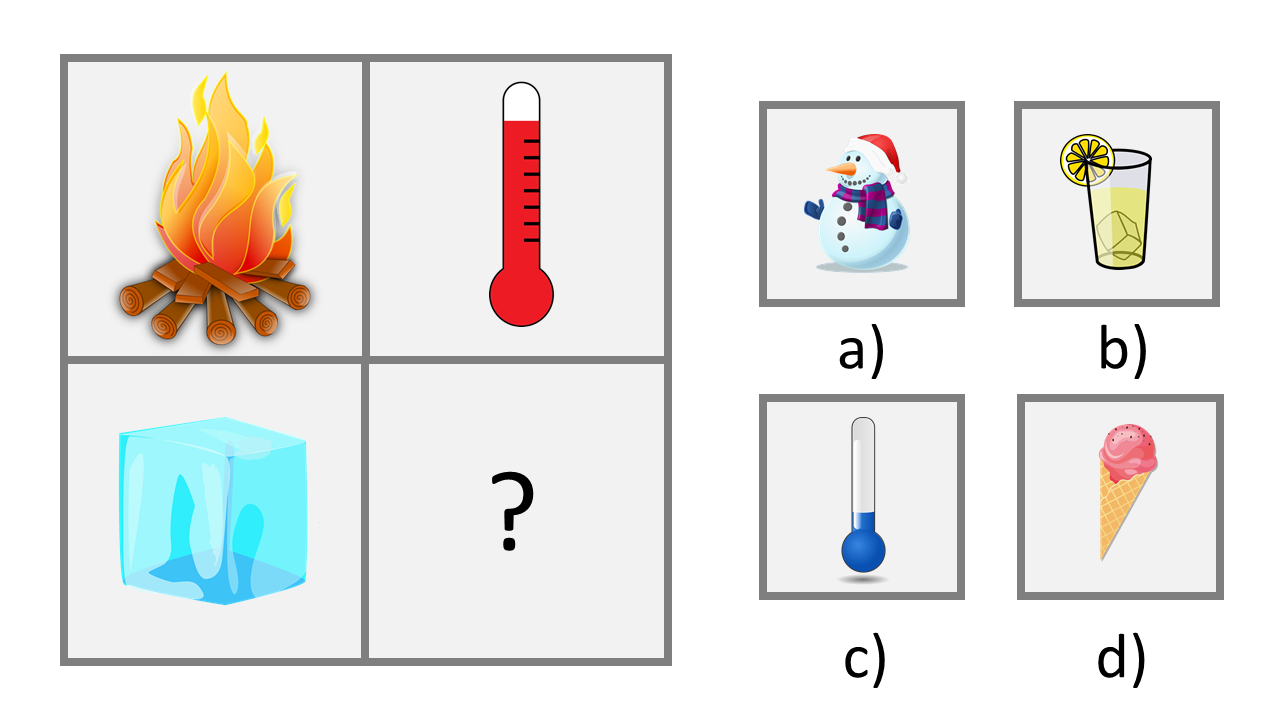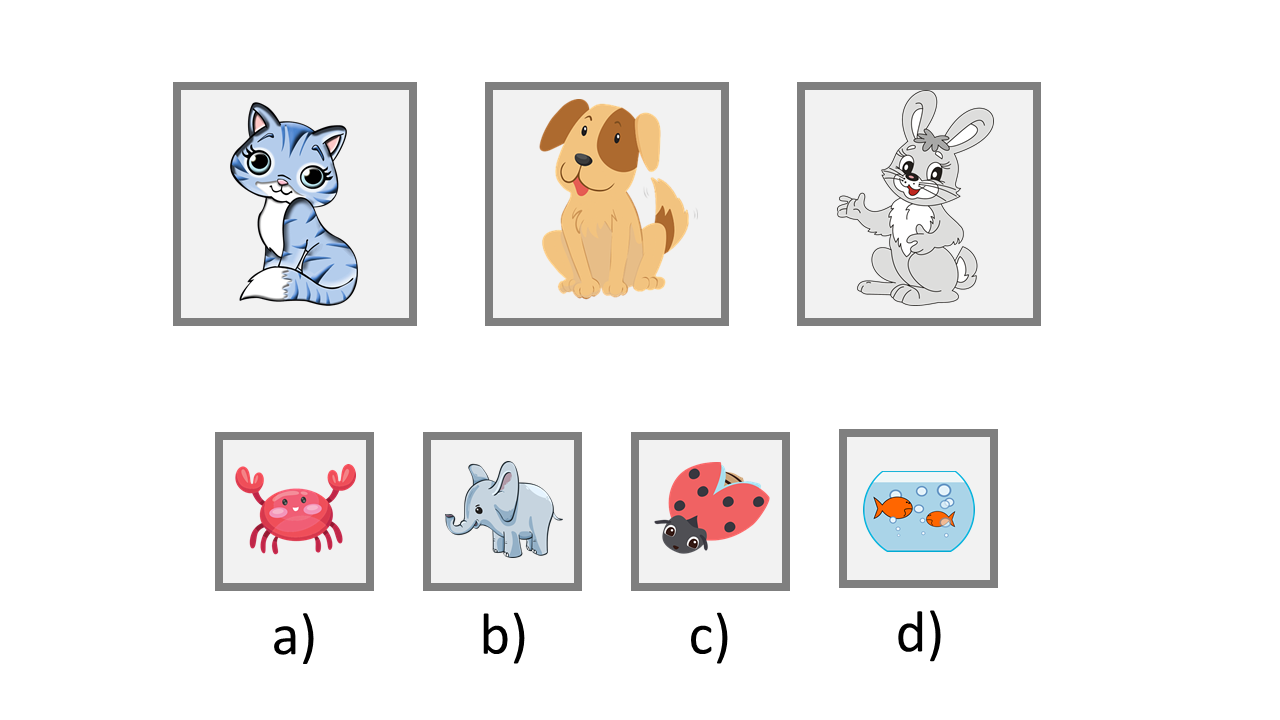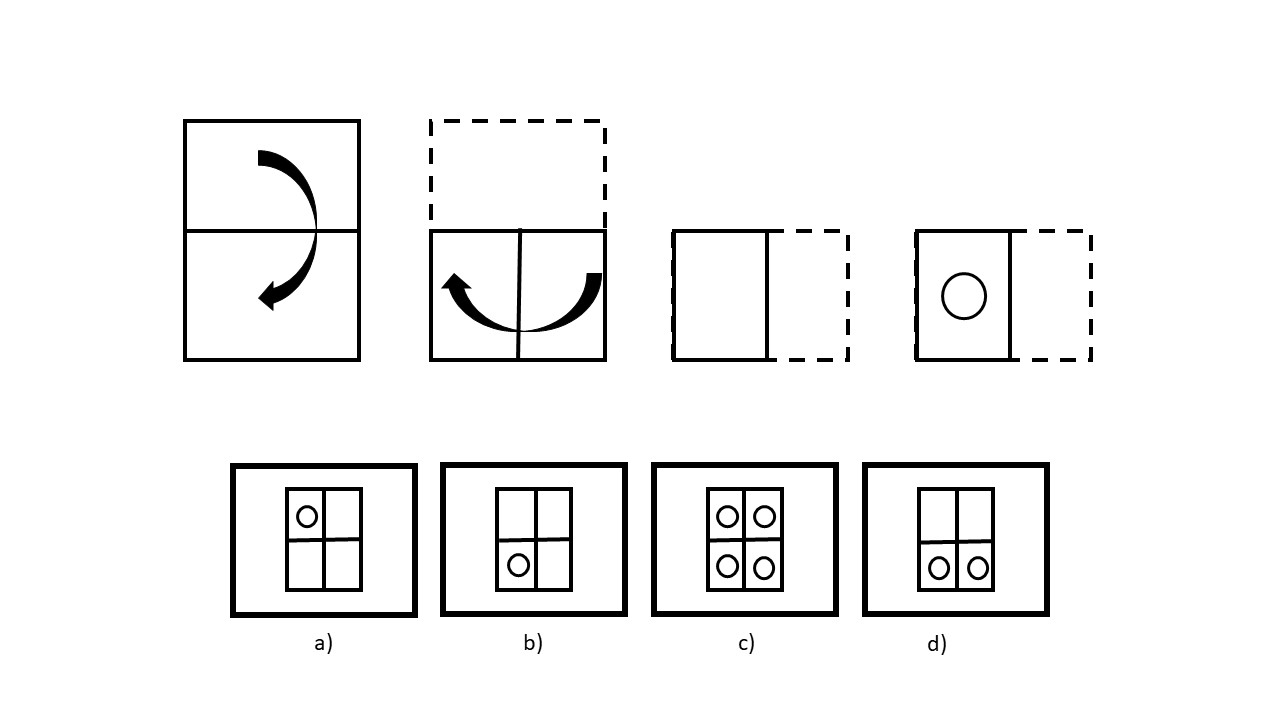CogAT Test (Cognitive Abilities Test) Explanation 2025
Updated November 6, 2024
- A List of CogAT Tests Available for Practice in 2025
- What Is a CogAT Test?
- How Is the CogAT Administered?
empty
empty
empty
empty
empty
empty
empty
empty
empty
- CogAT Test Grade Levels and Timing
empty
empty
empty
empty
empty
empty
empty
- CogAT Assessment Sections and Sample Questions
empty
empty
empty
- What Does Cogat Stand For?
empty
empty
- How to Prepare for CogAT Test
- How to Ace the CogAT Test in 2025
- Mistakes to Avoid While Preparing for the CogAT Test
empty
empty
empty
empty
empty
empty
empty
empty
empty
empty
- Frequently Asked Questions
- Final Thoughts
A List of CogAT Tests Available for Practice in 2025
What Is a CogAT Test?
The Cognitive Ability Test (CogAT) is used to measure the cognitive development of students in relation to their classmates and for assessment for gifted programs.
It is designed to test a learner’s reasoning ability and problem-solving skills rather than intellectual ability/IQ.
The cognitive ability test comprises nine sections split into three main categories:
- Verbal Battery
- Quantitative Battery
- Non-verbal Battery/abstract reasoning questions
Each of these tests consists of multiple-choice questions.
The cognitive assessment test is administered to groups of children, although it can be done on an individual basis when necessary.
Children are able to take the CogAT test online or using a paper and pencil.
There are two versions of the CogAt: the Primary Edition tests for students from Kindergarten(K) to 2nd grade and the Multilevel Edition tests for students in grades 3-12.
Typically, each battery of tests takes 30 to 45 minutes, with the whole assessment taking between two and three hours to complete.
It is usual to complete all three batteries of assessments at once.
However, children can take the sections separately.
How Is the CogAT Administered?
The CogAT test is typically administered in a group setting in schools or educational institutions. Here is an overview of how the CogAT is administered:
Date and Time of the CogAT Assessment
The CogAT test date and time are determined by the school or institution administering the CogAT.
It is usually scheduled in advance and communicated to students and parents.
CogAT Test Coordinator
A designated CogAT test coordinator, often a teacher or school staff member, is responsible for organizing and overseeing the administration of the CogAT.
They ensure proper test materials, instructions, and protocols are followed.
CogAT Test Materials
The cognative ability test requires specific materials, including test booklets and answer sheets.
These materials are provided by the testing organization or the school.
Test Instructions
On the CogAT test day, the test coordinator provides instructions to the students regarding the test format, rules and procedures.
They explain how to fill out the answer sheets and clarify any questions students may have.
CogAT Test Sections
The CogAT includes verbal, quantitative and nonverbal reasoning sections.
Each section assesses different cognitive abilities.
The test coordinator ensures that the appropriate test materials are distributed to the students for each section.
Timing of The Cognitive Abilities Test
The CogAT is a timed test, and the test coordinator communicates the time limits for each section. The length of the CogAT test depends on the level.
Students are instructed to pace themselves and complete as many questions as possible within the given time frame.
Test Administration
Students work independently on their test booklets, marking their answers on the provided answer sheets.
They read the questions, select the best answer choice and fill in the corresponding bubble on the answer sheet.
CogAT Test Monitoring
During the CogAT assessment, the test coordinator and/or proctors monitor the students to ensure they follow the instructions and maintain a focused testing environment.
They may answer logistical questions but do not provide assistance with the test content.
Completion and Collection
Once the allocated time for each section elapses, the students are instructed to stop working and put down their pencils.
The test coordinator collects the test booklets and answer sheets from the students.
CogAT Test Grade Levels and Timing
| Grade | Test Level | Number of Questions | Length of Test (minutes) |
|---|---|---|---|
| Kindergarten (K) | 5/6 | 118 | 112 |
| 1st | 7 | 136 | 112 |
| 2nd | 8 | 154 | 122 |
| 3rd | 9 | 170 | 90 |
| 4th | 10 | 176 | 90 |
| 5th | 11 | 176 | 90 |
| 6th | 12 | 176 | 90 |
| 7th/8th | 13/14 | 176 | 90 |
| 9th/10th | 15/16 | 176 | 90 |
| 11th/12th | 17/18 | 176 | 90 |
CogAT Level 5-6
- Kindergarten level
- 118 questions to be answered in 112 minutes
Practice CogAT Level 5-6 with Test Prep Online
CogAT Level 7
- 1st Grade (age 7)
- 136 questions to be answered in 112 minutes
Practice CogAT Level 7 with Test Prep Online
CogAT Level 8
- 2nd grade students, around 8 years old
- 154 questions to be answered in 122 minutes
Practice CogAT Level 8 with Test Prep Online
CogAT Level 9
- Grade 3, aged 9 years
- 170 questions to be answered in 90 minutes
Practice CogAT Level 9 with Test Prep Online
CogAT Level 10
- 10-year-old students in Grade 4
- 176 questions to be answered in 90 minutes
Practice CogAT Level 10 with Test Prep Online
CogAT Level 11
- For children aged 11 or in Grade 5
- At this level, the number of questions is the same as for Level 10
Practice CogAT Level 11 with Test Prep Online
CogAT Level 12
- Grade 6 children, aged around 12 years old
- 176 challenging questions to be answered in 90 minutes
Practice CogAT Level 12 with Test Prep Online
CogAT Assessment Sections and Sample Questions
Verbal Battery
The verbal battery of CogAT assessment looks at a student's ability to understand written questions in English and answer questions based on what can be found within a text.
The three parts of the verbal battery section with question examples:
Verbal Analogies / Picture
Children are required to complete a pattern by identifying the correct image or word to fill the gap in a 2 x 2 matrix.
Three of the squares will have an image in them, and students will have four possible options to choose from. The objective is to identify how they are related.

Which image would replace the '?'
Sentence Completion
Depending on the age of the student taking the cognitive assessment, the sentence completion section can be done in a variety of ways.
Younger children will be required to listen to a sentence with a word missing.
They will then select the correct image from four possible options to complete the sentence.
Older children will read the sentence for themselves and choose from a selection of words.
Alice took a ______ across the sea.
a) tractor
b) bike
c) car
d) boat
Practice the CogAT Test with Test Prep Online
Verbal Classification / Picture
Students are required to look at three images or words and consider how they are linked.
They will then choose a fourth image or word which they feel is linked to the previous three from a selection of options.
Walrus, Dolphin, Seal, ?
a) Ocean
b) Fish
c) Orca
d) Mammal
Quantitative Battery
The CogAT quantitative battery considers whether students are able to understand mathematical and number-based questions.
The three parts of the quantitative battery section with question examples:
Number Analogies
In the CogAT number analogies questions, students are shown two pairs of numbers followed by a third number that doesn’t have a complete pair.
They will be shown four possible options for completing the pair and must choose the correct one.
5 → 8 | 7 → 10 | 27 → ?
a) 30
b) 22
c) 17
d) 20
Number Puzzles
For this section, students will be shown equations that have one number missing.
They must then decide which number is required to fill the gap from the options offered.
12 + 7 = 3 + ___
a) 14
b) 15
c) 16
d) 17
Number Series
Children are presented with a row of numbers or a series of images that show beads on an abacus.
They must decide what the sequence is and which number should come next in the line.
3, 6, 9, 12, 15, ?
a) 20
b) 19
c) 17
d) 18
If you want 12-month access to all the practice resources for this test, our partner TestPrep-Online.com offers a Family Membership.
Family Membership gives you access to all the TestPrep-Online resources for the next 12 months. You will also get two separate accounts, which can be very helpful if you have two children preparing for their tests.
Get a Family Membership with 12-month access
NonVerbal Battery
The nonverbal CogAT battery consists of questions that measure reasoning skills using a series of images and geometric shapes.
Students are expected to select the correct answer from a series of options by utilizing these skills.
The three parts of the nonverbal battery section with examples:
Figure Matrices
This is similar to the picture and verbal number analogies in the respect that students are expected to identify relationships between images.
In this section, they will be shown three images that are somehow related to one another alongside four possible options.
They need to choose one of the four images that are related to the first three.

Which of the four answer options is related to the top three?
Paper Folding
Students are shown images of paper with dotted lines or holes punched into it.
They will then be shown four possible images for the final result and must decide which shows the paper after it has been folded or holes have been cut.

Which answer option reflects how the paper would look when unfolded?
Figure Classification
Similar to the picture classification section, in the figure classification CogAT section students must understand the relationships between shapes.
They must then find the correct answer from four possible options to complete the pattern.
◢, ◣, ◤, ?
a) ▶
b) ◥
c) ◀
d) ◢

What Does Cogat Stand For?
The CogAT test is commonly used for two reasons:
- To identify children performing above age-related expectations who should be placed into gifted and talented programs.
- To identify and monitor students who need extra support
Gifted and Talented Students
Gifted and talented programs are used in many schools as a way to help students reach the very best of their potential.
To effectively do this, however, they need to be able to identify which students are most likely to benefit.
This is where the cognitive ability test can help. Each school will have criteria that must be met for students to be eligible for their programmes.
The exact nature of these criteria will vary from state to state.
By accurately ranking students within their peers, it is easy to identify those who are achieving above expectations.
These are the ones who would benefit from entry to a gifted and talented programme that can help to nurture their abilities.
Additional Support
Students can need additional support with learning for a wide variety of reasons.
Sometimes, it will be because of medical conditions, which means that they cannot process and retain information in the same way as the average child.
Other times, it can be because of personal, family or social needs which impact their ability to learn.
The cognitive assessment test can help to identify any areas where a child may be struggling.
This, in turn, means that teachers can implement plans to offer additional support or change their approach to learning in a specific area so that the child can catch up and keep pace with their peers.

How to Prepare for CogAT Test
To prepare your child for the CogAT (Cognitive Abilities Test), follow these tips:
Step 1. Understand the Test Format
Familiarize your child with the structure and content of the CogAT. Understanding the format will help them know what to expect on test day.
Step 2. Review Key Concepts
Review key concepts that are covered in each section of the CogAT.
For the Verbal battery, focus on vocabulary, analogies and verbal reasoning skills.
For the Quantitative battery, practice basic math operations, number relationships and problem-solving.
For the Non-Verbal battery, work on spatial and visual reasoning skills.
Step 3. Practice Sample Questions
Utilize CogAT practice materials or sample tests to become familiar with the question types and format of the test.
This will help your child improve their speed and accuracy and build confidence.
Step 4. Develop Reasoning Skills
The CogAT assesses cognitive abilities such as critical thinking, problem-solving and reasoning.
Engage in activities that promote these skills, such as puzzles, brain teasers, logic games and spatial awareness exercises.
Step 5. Enhance Vocabulary
Improve your child's vocabulary by reading books, newspapers and articles.
Pay attention to unfamiliar words, their meanings and how they are used in different contexts. Expand your vocabulary through word games, flashcards and word association exercises.
Step 6. Strengthen Math Skills
Practice math skills relevant to the CogAT, including number operations, patterns, sequences and mathematical reasoning.
Solve math problems, work on mental calculations, and practice with word problems to improve your quantitative abilities. Work on Spatial Awareness
Develop spatial awareness and visual-spatial skills by engaging in activities such as puzzles, block building, drawing and identifying shapes and patterns in the environment.
Practice mentally manipulating objects in space and recognizing spatial relationships.
Step 7. Time Management Practice
The CogAT is a timed test, so practice managing your time effectively.
During your child's practice sessions, set timers to simulate the test conditions and practice pacing themself to complete each section within the allocated time.
Step 8. Analyze Practice Results
After CogAT sample questions or taking practice tests, review their answers and analyze their performance.
Identify areas of strength and weakness to focus study efforts on improving weaker areas.
Step 9. Stay Calm and Confident
Maintain a positive mindset and approach the test with confidence. Manage test anxiety by relaxation techniques, deep breathing exercises, and positive self-talk.
Remember that the CogAT is just one measure of your child's abilities and their performance does not define your intelligence or worth.
How to Ace the CogAT Test in 2025
Step 1. Practice Tests
Although the CogAT test measures cognitive ability, which means that it isn’t the type of assessment that can be studied for, taking practice papers can still be useful.
Giving children an opportunity to practice questions that are similar to those they will find in the assessment can help build familiarity and confidence.
This can, in turn, enable them to perform to the best of their ability on the day.
Step 2. Remember That the Tests Are Timed
Another vital factor to consider when using practice tests is that the CogAT assessment is timed*.
For this reason, it is important to make sure that children are timed when they take practice tests.
This can help them to understand how to effectively answer questions within a time limit and how to approach their assessments.
Step 3. Learn Origami or Download a Paper-Folding App
One of the sections of the non-verbal battery of tests focuses on a student's ability to understand how paper is folded to achieve a specific shape.
Learning origami or using an app to practice paper folding techniques can help children to understand what they will need to do during the test.
Step 4. Play Language Games
Playing games such as scrabble and mad libs can help children broaden their vocabulary and understand how language works.
These games can also be useful in building confidence.
Step 5. Play Maths Games
There are many maths websites and apps now that can help build mathematical skills for children.
Practicing not only helps to cement a child's understanding but also builds confidence.
Step 6. Read With Your Child and Ask Questions
Not only does this help to improve your reading skills; however, it can also help to improve the ability to comprehend and infer from written text.
By asking your child questions, you are encouraging them to think about the text and the meaning behind what they have read.
This can also help them get into the habit of thoroughly reading through pieces of text to fully understand what is said.
Step 7. Practice Mindfulness
If your child is particularly nervous or anxious, then mindfulness can be a helpful tool.
When used effectively, mindfulness can help reduce feelings of stress and tension and improve mental clarity and focus.
Step 8. Make Sure That Your Child Is Well Rested
One of the most important things you do ahead of any test is to ensure that your child has had enough sleep and is well-rested.
Studies have shown that tiredness can negatively affect cognitive performance.
By making sure that your child gets a good night's sleep, you will be giving them the best possible chance to perform to the best of their abilities.
Mistakes to Avoid While Preparing for the CogAT Test
When preparing for the CogAT (Cognitive Abilities Test), it's important to be mindful of common mistakes that can hinder your preparation.
Here are some mistakes to avoid:
Procrastination
Avoid procrastinating and leaving your preparation to the last minute.
Start early and create a study schedule to ensure you have enough time to cover all the necessary content.
Neglecting Test Format
Do not overlook the importance of understanding the test format and question types.
Familiarize yourself with the different sections and question styles of the CogAT to better prepare yourself for what to expect on test day.
Ignoring Weak Areas
Identify your weaker areas and give them sufficient attention.
It's natural to focus on subjects or question types you are more comfortable with, but it's crucial to address your weaknesses to improve overall performance.
Lack of Practice
Avoid solely relying on conceptual understanding without sufficient practice.
Practicing sample questions and taking mock tests is essential for improving speed, accuracy and familiarity with the test format.
Overlooking Test Instructions
Pay close attention to the test instructions.
Each section may have specific instructions that need to be followed carefully.
Misinterpreting or disregarding instructions can result in unnecessary errors.
Neglecting Time Management
Time management is crucial during the test.
Practice working within time limits for each section to ensure you can complete all the questions within the allotted time.
Avoid spending too much time on a single question or section, which can prevent you from completing the entire test.
Ignoring Cognitive Skills
The CogAT assesses cognitive abilities such as critical thinking, problem-solving, and reasoning.
Focus on developing these skills alongside content review.
Don't solely rely on rote memorization of facts.
Neglecting Vocabulary Development
Vocabulary plays a significant role in the verbal section of the CogAT.
Work on expanding your vocabulary by reading widely and using resources like flashcards to learn new words.
Neglecting Test-Taking Strategies
Familiarize yourself with test-taking strategies specific to the CogAT.
For example, understanding how to approach analogy questions or how to eliminate answer choices can help improve your performance.
Ignoring Physical and Mental Well-being
Prioritize self-care and maintain a healthy lifestyle.
Get enough sleep, eat nutritious meals and engage in activities that reduce stress.
Physical and mental well-being can positively impact your cognitive performance.
No, CogAT is not IQ Test. CogAT measures thinking ability that starts developing from a very young age and keeps growing until early adulthood. When IQ tests measure what people are naturally good at, like their natural abilities or talents. So you can’t match the CogAT score to IQ.
Balance is very important when preparing for the CogAT test. Ensure that your child has the time to revise, but do not push them too hard to achieve the top results.
Putting them under pressure will make them feel nervous and they will not perform as well as if they are calm and confident.
The CogAT test is an honest reflection of their academic abilities, and so you should prioritize learning how your child can improve from the test results.
There are three types of questions on a CogAt test, and in each section, there are subsets of other questions. The verbal battery tests include picture analogies, sentence completions and picture classifications. The quantitative battery includes number analogies, puzzles, and series that test a student’s mathematical skills. Finally, the non-verbal battery includes figure matrices, figure and statistic classifications, and shape classification.
Depending on the level of the CogAT test, there are usually between 118 and 176 questions. Students are usually given 30 to 45 minutes per battery. In total, the examination should take around two hours to complete, but this is dependent on the volume of questions. In general, you will have to complete more questions if you are older and in a higher grade.
The Cognitive Abilities Test (CogAT) is a multiple-choice K-12 assessment designed to measure reasoning abilities and problem-solving skills using verbal, math, and visual skills.
The CogAT measures the cognitive development of reasoning abilities and problem-solving skills using verbal, quantitative, and nonverbal skills of students in relation to their classmates and for assessment for gifted programs.
CogAT assessment is often used to identify students for gifted and talented programs, by assessing reasoning and problem-solving skills which CogAT measures.
For more information on the NNAT, click here
The CogAT test date and time are determined by the school or institution administering the CogAT. It is usually scheduled in advance and communicated to students and parents.
Typically, each battery (Verbal, Nonverbal, Quantitative) of tests takes 30 to 45 minutes, with the whole assessment taking between two and three hours to complete.
Final Thoughts
CogAT assessments are a commonly used method of testing throughout the education system.
Because of the multiple choice nature of the questions and scoring system, it is a reliable way of assessing students’ progress and cognitive ability to decide whether they require additional support or need to be pushed further than their peers.
As with all forms of cognitive assessment, revision options are limited.
The test is not designed to assess knowledge.
There are still things that can be done to ensure that your child is relaxed and prepared ahead of the assessments to be able to perform their abilities and get the best CogAT test scores.




